|
Another school year is complete, kids ranging from kindergartners to college students now find themselves having what seems like an everlasting summer in front of them. It’s a hedonistic existence which could include staying-up late (and “sleeping-in”), vacations, camps and time at a beach or pool. Some kids will work, and others will play all day long. Teachers embrace the break as well—many now getting the chance to unwind and unravel from the past school year, slowly getting themselves recharged and refreshed over the next two months before another demanding “tour of duty” comes their way—always faster than anticipated it seems. I know all about this stuff as I’m the father of four teens and married to a teacher. There is a select group of people who embrace summer, but find it to be, perhaps, their busiest time of the year. These are the school administrators, an unsung bunch that don’t have reason to countdown to the “last day of school” each year. These folks are faced with a myriad of tasks that must be completed over the summer months before the annual return of students and teachers in late August. Whether this is a principal’s first or twentieth year as an administrator, planning everything that needs to get done before the start of the new school year can be a challenge. These chores include such things as hiring new teachers, overseeing class assignments, managing school reparations and acquiring needed books and supplies. Mount Olivet Cemetery is final resting place to countless former educators. In the past, we have featured blog stories on folks like Joseph Henry Apple, Professor William Von Steinman, Hester Posey and Elihu Rockwell. This week we will chronicle one of the most beloved school administrators in Frederick history. His name was Amon Burgee—and education was not only a year-long profession, it was a lifetime passion.  Miel Burgee Miel Burgee The Making of a Professor Amon Burgee was born on a day where much of the nation, at least the northern states, was in mourning. This was April 16th, 1865, the day after President Abraham Lincoln had died as a result of John Wilkes Booth successful assassination attempt. Amon’s birthplace was near Price’s Distillery, once located at the crossroads of the namesake road and Maryland route 75. The distillery is long gone from this locale situated southeast of Urbana, but a current landmark is the Green Valley Animal Hospital. Amon’s father, Miel Burgee (1818-1903) was a native of the area and a lifelong farmer along Prices Distillery Road. His mother, Clara Elizabeth Lawson (1843-1888), was Miel’s second wife. Six children would be blessed to this union, with Amon being the oldest.  Old Pleasant Grove School Old Pleasant Grove School Amon grew up on the Burgee family farm where he learned several of life’s greater lessons, none better than the value of hard work. He attended the Pleasant Grove School and quickly developed a desire for learning and a love of reading books. His biography, appearing in Williams and McKinseys’ History of Frederick County (1910), says of the young scholar: “Almost from the first day he showed a fondness and aptitude for study. Such was his love for school that neither the elements nor three miles of muddy road were sufficient to cause a single day’s absence during eight years’ attendance. This won him the confidence and admiration of his teacher who urged him to continue his studies.“ Amon would go to high school, enrolling in Glenellan Academy in nearby Ijamsville. The school was run by Herbert Thompson from 1878-1888. Burgee’s advanced schooling was not a given, as most farm children customarily went to work full-time (back on the farm) after eighth grade. He completed his classwork in an accelerated rate after just one year. Burgee then attended Western Maryland College in Westminster in fall 1882. He would graduate five years later, having to spend an extra year at the college taking courses in Greek, German, Literature and Science in order to earn a Bachelor of Arts degree as a member of the “Class of 1887.” He had been denied his diploma the previous year because of a requirement to take Greek. He completed four units of the language in that single, additional senior year. Amon Burgee’s path led back to the family farm near Urbana, but not for long. He would accept the principal position for the public school of Union Bridge in Carroll County. Williams’ History of Frederick County claims that the 23 year-old, recent graduate took this position simply as a favor to his friend and fellow Western Maryland alumnus James Diffenbaugh, Carroll County’s school superintendent. On his first day in the new post, students laid in wait, setting to test the moxie of their new principal. Amon reportedly gave them a view of his expectations as he apparently “thrashed” the oldest boy in the school. Suffice it to say, Principal Burgee never again had a discipline problem with any of his other students in Union Bridge.
Boy’s High School Up through the nineteenth century, higher education was centered primarily on males and not females. Girls could receive the 3 “R’s” at private schools and from tutors and governesses. These opportunities were certainly not the norm for the typical girl or young lady. Frederick’s heritage includes the incredible story of the Frederick Female Seminary, later known as the Frederick Woman’s College. Under the leadership of the fore-mentioned Joseph Henry Apple, this institution (once housed in Winchester Hall) would become one of the first, and foremost, educational centers for women in the entire country. We know this school today as Hood College, and Frederick can share the laurels as the backdrop for the school’s role in bridging the educational gender gap. Ironically, the first public high school in Frederick was for girls, and not boys. Girls' High School was located on E. Church Street just shy of Chapel Alley and behind St. John the Evangelist Catholic Church and served for many years as the headquarters for Frederick County Public Schools before a modern, high rise facility was opened in the 2000's at the corner of S. East and South streets. Young males of the 19th century attended what was known as the Frederick Academy, housed in an impressive building that once stood on northeast corner of Council and Record streets (adjacent today’s Frederick City Hall). For those not attending “The Academy,” another local option was St. Johns Literary Institute. Boys from all over the state attended this Catholic institution, opened by Jesuits in 1829. One of these students had an even stronger connection to Abraham Lincoln than Amon Burgee (and his birthdate)—this was alleged Lincoln conspirator, Dr. Samuel Mudd, who attended this school in Downtown Frederick’s E. Second Street in the late 1840’s. In 1891, many local community leaders found that the majority of boys here could not afford the tuition fees associated with the above-mentioned two schools of secondary learning. Tax payers requested that a public high school be opened for boys. The Board of County Commissioners and the Board of Education employed Mr. Marshall P. Richards to open a school for boys, who desired “better preparation for life, as well as for College.” The Male High School started in a building located at 314 N. Market Street between Third and Fourth streets and was known as Koontz Hall. Koontz Hall had been the site of a dancing school in 1885, operated by a Frenchman named Monsieur F. William Mueller. Mueller had formerly had stints in places such as Memphis, TN and Louisville, KY and would go on to take a position of professor of dancing for the US Naval Academy in Annapolis. The new high school opened in September 1891 and boasted 13 students. The first graduating class of Frederick Boys’ High School (1892) consisted of three graduates: David Beall, Nelson Beall and Harry Lakin. Professor Burgee was hired in the summer of 1894 to come back to Frederick to carry out the duties associated with the principal position of Frederick Boys’ High School. A small booklet entitled The Boys High School, Frederick, Maryland (1894-1922) by Mary C. Ott gives a description of Amon Burgee’s first day: “It is 8:45am, September 3, 1894—a group is at the entrance to the Hall, waiting to pass judgment on this new principal. ‘He is coming. He looks like business.’ He arrives. ‘Boys, it is time for you to be at your desks.’ Do they loiter as formerly? Oh, no. They take the stairs, nineteen steps, almost as one, with leap and bounds. From now on, it is work. No nonsense. The distance from the Principal’s desk to the last desk in the Hall, was much longer than the usual class room;—the heat of September was intense and the last boy in the row, being too tired a and warm to think, played with a pocket-mirror, reflecting on the sewing of a lady across the street. It had been fun the year before, but this Principal was alert, and that boy was made an example of the foolishness of wasting mind and matter and from that day, no boy in that group wasted his time nor energy in play.” Amon Burgee was overseeing a school consisting of eighth, ninth and tenth grades. Eleventh grade came about later in 1907. Operating under the three year plan, students graduated with 22 Units. Year courses included Latin, Botany, Zoology, Physical Geography and Astronomy. Amon taught all subjects at one point or another and his pupils would go into a variety of occupational fields in the future: professional, political, educational, business, cultural, and recreational. Burgee’s first graduating class consisted of just one student—Jesse Roop Klein. Klein would become a minister, school-teacher and farmer. The number of graduates constantly grew in time, along with it, Professor Burgee’s sphere of influence. He knew his role in life, to grow young minds into competent/community-impacting adults. Burgee's success could also be credited to the talented staff of teachers he had assembled. As for summer vacation, Amon went back to his first “growing experiences” and the family farm near Price’s Distillery. Here he cared for the summer harvest, just after delivering his academic harvest of graduates. Throughout June, July and August, he readied himself, staff and students for the upcoming school year. No rest for the weary! Mr. Burgee served Boys’ High School as principal from 1894-1916. For many years he received a salary of $700/year. Lucrative offers were made by other schools to lure him away, however he declined all of them, some of which promising to double his pay. Mrs. Ott goes on to say of Burgee: Years of fruitfulness and happiness in the continued success of those who had gone out from the Boys’ High, under the guiding hand of himself and his faculty. From the beginning of his regime as Principal, the scholastic assignment had been such, that the evenings were spent at home, in educational preparation. Parents were happy to cooperate and give encouragement to sons to study. Mr. Burgee, and later his teachers did not demand the impossible, but did expect every boy to put forth his best efforts. As enrollment grew, they outgrew their first school home and were given quarters on the third floor of the South Street School. In the interim, the new High School was being built on the North Market St. School grounds to accommodate primary and elementary grades and Mr. Burgee was made Principal of the entire school. Professor Amon Burgee instituted forensic art societies such as classic literature and student debate. A lasting legacy to Amon Burgee is the surviving team name of Cadets attributed to Frederick High School up through the current day. In 1904, Burgee instituted mandatory military training for his students. He formed the Boys’ High School Cadet Corps, which would be drilled by Harry J. Kefauver, another faculty member at the school. The Cadet Corps was a success from the start. Eventually three companies were formed—A, B, C, and the discipline and tactics learned were said to have carried over into student life, home life and civic participation. Burgee’s rationale was that if every boy could become a leader of a school corps company, that student could later become a leader in community life, wherever he lived.  This held true as a number of Frederick Boys’ High graduates under Burgee became pillars in our community. Many also served in the military as America entered the World War in 1917. One former student, and captain of a Cadet Company at Boys’ High, was Earlston Lilburn Hargett. Hargett would go on to become a champion debater at the University of Pennsylvania and earned both a law and business degrees while there. In late September, 1918, 1st Lt. Hargett would lose his life in eastern France while serving in the 150th Field Artillery in the opening volleys of the Meuse-Argonne offensive, the deadliest battle in American history. (NOTE: In case you are interested, Cadet Corps training in Maryland was disbanded in 1920 by the State Board of Education.) Amon and his wife were busy raising kids of their own. They resided in Frederick City, living on E. Patrick Street. In 1907, they bought a beautiful country manor house on a 40-acre estate east of town. This was known as Park Hall, built in the 1840's and recently demolished in the last decade. Interestingly, he had bought this home from Robert Downing, one of the top stage actors of the 19th century who is also buried in Mount Olivet. The Burgees would reside here for the next 37 years before moving in town in 1944. Speaking of moving locations, in 1910, a better site was sought to accommodate an ever-increasing enrollment for Boys' High. A new school structure was built at the head of Elm Street. This consisted of a better equipped plant eventually morphed into the first home of Frederick High School when both the Boys’ and Girls’ High Schools were consolidated into a single coed facility in 1922. When Frederick High School was moved across town (to its present site) in 1939, the second home location of Burgee’s old school became known as the Elm Street School and became a Junior High facility that many residents, including my wife, attended. Today this site features a parking deck for Frederick Memorial Hospital. Under Amon Burgee’s leadership, the Frederick Boys’ High School came known as one of the leading preparatory schools in the eastern United States. Burgee retired as principal in 1917, but he practiced what he preached in continuing to serve his community thereafter. In 1930, he was elected county commissioner and was a devout servant to Trinity Methodist Church where he sang in the choir and taught the Men’s Bible Class for 55 years. All the while, Amon never lost his interest in two other things, near and dear to his heart: agriculture in which he served in various offices including in the Farm Bureau and the Frederick County Farmers Cooperative Association, and his former students. Professor Burgee can be summed up as a lifelong cultivator. Likewise, he always held the adoration and respect of his former students. In 1944 a committee was appointed to arrange a fine commemorative event for the following year—the 50th anniversary of the Boys’ High School. This was overseen by the Boys’ High School Alumni Association, consisting of former students whose names read as a Who’s Who of Frederick’s past. The event took place in early June, 1945. Amon Burgee had been ill and housebound for nearly a year, but he would muster up the strength to travel to Braddock Heights and the Vindabona Hotel to make, what would stand, as his last public appearance. The guest of honor had this final opportunity to see the boys he had turned into men. Professor Amon Burgee just didn’t create the institution of Frederick’s Boys’ High School, he embodied it until his last breath. The aged educator died at age 80 on August 6th, 1945, at his home on East Patrick Street in Frederick. Amon would be laid to rest in a lot owned by Linthicum family of whom his sister married into. This is in Area T/Lot 41. The school's alumni association went one step further as a special tribute was erected as a lasting monument to their beloved administrator—one who never took summers off. Former student Joseph Walker Urner was commissioned to sculpt a bust likeness of Professor Burgee, which sits atop a four-foot granite pedestal. This veteran of both world wars was the same artist who had previously crafted the busts of Roger Brooke Taney and Thomas Johnson, Jr. that formerly stood in Court House Square. (To my knowledge, this one has never received threats to be moved.)
A new, and very special, burying place would be purchased for this teacher of men by the alumni association. This was Area AA/Lot 138, a lone parcel that sits as a small island unto itself at the northeast corner of AA, and is buttressed by driveways paralleling neighboring areas MM and T. Professor Burgee's body would be moved to this location on November 6th, 1946. The bust monument would be unveiled on June 20th, 1947.
0 Comments
“This operation is not being planned with any alternatives. This operation is planned as a victory, and that's the way it's going to be. We're going down there, and we're throwing everything we have into it, and we're going to make it a success." --General Dwight D. Eisenhower Well, it certainly feels of late that we are in the midst of a gauntlet of military commemorations, a time where patriotism is remembered, and equally important, honored. We are a week-and-a-half removed from Memorial Day, and Flag Day will be upon us next week. And the granddaddy of patriotic celebrations is simply a month out—July 4th! But there is an extra day in early June that is certainly deserved of recognition for the events that transpired 75 years ago on June 6th, 1944. This is better known to history, military and freedom admirers as D-Day. Regarding this day, a website www.army-mil.com says the following: “On June 6, 1944, more than 160,000 Allied troops landed along a 50-mile stretch of heavily-fortified French coastline, to fight Nazi Germany on the beaches of Normandy, France. Gen. Dwight D. Eisenhower called the operation a crusade in which, ‘we will accept nothing less than full victory.’ More than 5,000 ships and 13,000 aircraft supported the D-Day invasion, and by day’s end, the Allies gained a foot-hold in Continental Europe. The cost in lives on D-Day was high. More than 9,000 Allied Soldiers were killed or wounded, but their sacrifice allowed more than 100,000 Soldiers to begin the slow, hard slog across Europe, to defeat Adolf Hitler’s crack troops.” Frederick’s Mount Olivet Cemetery is the final resting place for a few of the men who participated in this legendary American offensive. One of these was 27-year old Calvin Clayton Cannon, who holds the unique distinction of being the first Frederick County World War II soldier to have lost his life in France. As you have probably guessed, this unfortunate incident occurred on June 6th, 1944. Today, Cannon’s mortal remains comprise a semi-circle of the graves of 30 US military veterans lost during World War II and surround Mount Olivet’s World War II Memorial located in Area EE. This monument was unveiled on Memorial Day, May 30th, 1948. Two large pylons are topped with stars and flank a central pedestal bearing the names of 213 fallen Frederick County World War II veterans and crafted after an eternal fame and reads: “Dedicated to the Men and Women of Frederick County, who by their unselfish devotion to duty, have advanced the American ideals of liberty and the universal brotherhood of man.” PFC Lester Earl Stull was the first veteran to be buried within the confines of the newly created World War II monument area. A military funeral was held for this former member of the US Army’s 134th Infantry Regiment at 2:00pm on Saturday, December 13th, 1943. Two days later, our subject for this week’s “Story in Stone,” PFC Calvin C. Cannon would be the second man interred in this extremely hallowed area of Mount Olivet. His reburial, with full military honors, occurred on Monday, December 15th, 1947. Cannon’s body was delivered to Frederick by train a few days prior, as it had been sent direct by the Philadelphia Quartermaster depot after returning stateside from an initial burial in in Normandy, France. From Yellow Springs to Omaha Beach Calvin Clayton Cannon was born on April 7th, 1917. Just one day earlier, Congress granted a request for war made by President Woodrow Wilson. The United States was now formally at war with Germany. The country would come out of “the Great War” victorious. Young Calvin was merely a year-and-a-half old when church bells rang out across Frederick County on November 11th, 1918 proclaiming a cease fire after the signing of an armistice between the US and its fellow Allies and chief aggressor, Germany. Calvin Cannon grew up in the small Yellow Springs community north of Frederick City. His father, Clayton Lurene Cannon, was a skilled carpenter and his mother, Laura Christina (Kintz), was a homemaker. Calvin was one of nine children. He attended local schools, including one year of high school and was quite familiar with farm work. Calvin was 24 when the US entered into a second World War. The United States Congress declared war on Japan (and other Axis powers in Germany and Italy) on December 11th, 1941 just days after that “infamous day” of December 7th. President Franklin D. Roosevelt urged the nation to join Great Britain and other allies in liberating European countries that had been initially invaded by Germany and Italy back in the spring and summer of 1940. War in western Europe continued through 1941 as the US sat on the fence, but was quietly ramping up for war against Germany.  Cannon would join the US Army in January, 1942. Three of his brothers, Carroll, Herbert and Robert would also enlist and serve in the war. Calvin soon found himself at Camp Lee in Prince George County, VA. He would be assigned to the 26th Infantry Regiment. The regiment’s nickname is the "Blue Spaders," taken from the spade-like device on the regiment's distinctive unit insignia. The regiment was assigned to the 1st Infantry Division for the duration of World War II. The 26th Infantry led America's first-ever amphibious assault in North Africa and fought at the Kasserine Pass in Tunisia in February, 1943. A few months later, Cannon’s regiment assaulted Sicily at the amphibious battle of Gela in July. At the time, he held the rank of private first class, having received a promotion earlier. A month later, the Frederick News reported to readers in Calvin’s home county that the young man from Yellow Springs had been seriously wounded in the Italian campaign. He apparently had received an injury to his back. Calvin fully recovered and rejoined his fellow soldiers. With the Allied Sicily campaign over, the division returned to England, arriving there on November 5th, 1943 to prepare for the eventual invasion of Normandy, France across the English Channel to the south. The 1st Infantry Division and one regimental combat team from the 29th Infantry Division would comprise the first wave of troops that assaulted German Army defenses on Omaha Beach on June 6th, 1944—D-Day. The 26th regiment was commanded by Colonel John F. R. Seitz. Over the duration of the war, Seitz would lead his men in three amphibious assaults, and earned seven battle streamers, a Presidential Unit Citation, and five foreign awards. The third of these assaults would take place on June 6th, 1944.  USS Dorothea Dix USS Dorothea Dix Below is a part of the most detailed report from the 26th Infantry Regiment’s 3rd Battalion. It gives a glimpse into what PFC Cannon experienced over his final week among the living: June 1 - All Battalion transportation and equipment not being carried by personnel (excepting kitchen trucks and personnel which are scheduled to come ashore at "D" plus 8) is today completely loaded aboard LST #494, U. S. Navy. The ship is anchored in Plymouth Bay, England. Seems rather symbolic, for the Mayflower was anchored in this same bay before the Pilgrim Fathers made their historic voyage to New England. Today all NCO's received their briefing from 0930 to 1030 hours in the Officers Ward Room. Were brought up to date on Enemy installations and dispositions, our plans and tactics to be used and routes to be taken after we hit the beach. Army rations are being taken aboard. June 2 - We are still anchored put in the bay but the convoy is forming slowly but surely. Even in this one small port the forces, and the equipment, the ships and the personnel are tremendous and preparations such as we see here, are occurring all over the United Kingdom. It forebodes evil for the Jerries whenever "D" day occurs. Boat assignments have been made in case of abandon ship. General Quarters drill has been observed and worked out quite well. Personnel reacted quickly according to instructions and generally were well behaved during the drill. All units aboard holding briefing conferences again. All personnel gradually becoming acquainted with the situation and the plans. Nothing unusual happened today. Day filled with unit organization. Motors were warmed up and tested for one hour from 1500 to 1600 this afternoon. Weather is clear and sunny. Lieutenant Volk and Lieutenant Allen plus six men as an advance detail boarded the DOROTHEA DIX, U. S. Navy, today. June 3 - Convoy is still forming and growing. Aboard this ship the day being devoted again to briefing and general organization. Motors again started and warmed up between 1500 and 1600 hours. Everyone anxious to get going and get the job started. The balance of the Battalion is loading aboard LCI's today. June 5 - Moved out of Plymouth Bay at 0230 Hours. Sailed along south with France our destination. In particular, the coast of Normandy at a point between St. Laurent Sur Mer and Colleville Sur Mer. Men getting all packed and ready to go. Morale is good and spirit excellent. Again, nothing to do but "sweat it out". At darkness can still sight the coast of England. No unusual occurrences. June 6 - At daylight no land can be observed. 0720 hours was to be "H" hour for the invasion of Europa Festung (The Fortress of Europe). We are to land on Omaha Fox Green beach. At 1000 we first observed land on our right flank (starboard bow). We were first able to discern the beach at 1500 hrs. It seems to be littered with equipment. Enemy fire falling length and breadth of the whole beach. The Bn. hit Omaha Easy Red Beach between 1800 and 1900 after vainly trying to get in on Fox Green. "I","K", and "M" Companies landed during this period and moved inland. Col. Corley's command reports the beach an utter shambles. Equipment scattered everywhere. Beach under observed artillery fire. Derelict sea-craft hung up on the beach--a few on fire. The colonel led the Battalion through the one gap they were able to traverse. Moved toward assembly area and ran into the Regimental CP in an over-ran gun emplacement. At 2300 hrs. German Dive Bombers bombed the beach area. At 2300 the Bn. moved out in column of files because of mine fields. Colonel Corley received orders that 116th and 115th are attacking St. Laurent Sur Mer and that 3rd Bn. is to by-pass the town and seize the high ground on the south of town. Battalion moved out at 1230 with "K" Co. leading. Reinforced with two regiments of the 29th Infantry Division, the 1st Division led Force O in the assault on Omaha Beach in Normandy on D-Day, June 6, 1944. After being transported to shore aboard amphibious landing craft, soldiers of the 1st Division had to run 300 yards to get to the bluffs. The men encountered a hailstorm of intense fire from the German defenses. Through incredible acts of individual bravery, initiative and leadership, the 1st Infantry Division overcame the enemy forces and penetrated well inland. Some of the division's units suffered 30 percent casualties in the first hour of the assault, and secured the French towns of Formigny and Caumont by the end of the day. PFC Cannon would not have luck on his side on June 6th. He would become the first Frederick County man killed in action. Local newspaper accounts reached home nearly a month later said that this occurred in the siege of Cherbourg, a major, deep water port town. However, I have a major problem with this. The newspaper accounts (and our records based on them) are speculative at best. The town of Cherbourg is 51 miles northwest of Omaha Beach! There is no way PFC Cannon died on June 6th in Cherbourg, which would be liberated by the Allies a few weeks later around June 20th. I have traced regimental records and can't find the 26th Blue Spaders fighting in Cherbourg either. I strongly feel that Calvin C. Cannon landed in the eastern vicinity of Omaha Beach in the second phase on the late afternoon of June 6th, and was killed in action near here, just inland, at a location directly northeast of the village of Colleville-sur-Mer. Interestingly I found a name "Cabourg" on the map which appears both on a short road (alley) and entails a small cluster of old farm houses. This is at the intersection of Rue Cabourg and D514 (Route d'Omaha Beach). Could this be where PFC Cannon breathed his last breath? Cherbourg and Cabourg are very similar both spoken and written, and by the time news reached home in early July, the name of Cherbourg had been in the news a great deal with its capture in late June. (NOTE: I'm certainly open to continued guidance from folks much more studied in the battle and regimental movements of the 1st Division. I also haven't been able to find what company he belonged to.) Far from home, Cannon would be buried here, adjacent the shore of Normandy at St. Laurent.  American occupation of Aachen American occupation of Aachen The 26th would push on without PFC Cannon. The division fought through the hedgerows of Normandy, fought through the breakout and fought through the rapid Allied advance across northern France against the retreating German Army. They would defeat the Germans in Normandy and began plowing westward through France and into Belgium. The 26th eventually reached the Siegfried Line and border with Germany. In October, they conquered Aachen, the first German city of the war. They crossed the Rhine River and attacked all the way to Czechoslovakia by war's end. Beginning another occupation of Germany, the Blue Spaders bore the United States national colors at the Allied Victory in Europe parade, and served as guards at Nuremberg War Crimes Trials. Thus began a lengthy stay in Germany, first as conquerors and later as friends and allies. Sadly, PFC Calvin Clayton Cannon would not experience the fruits of war with his fellow soldiers—his body remained on a bluff overlooking Omaha Beach.  Colleville in 1944, initial resting place of PFC Cannon's body Colleville in 1944, initial resting place of PFC Cannon's body Cannon's corpse was placed in the temporary American St. Laurent Cemetery, that was established by the U.S. First Army on June 8th, 1944, the first American cemetery on European soil in World War II. This would later morph into the famed American Cemetery at Colleville-sur-Mer. I had the great opportunity of visiting this cemetery and Omaha Beach back in June, 2001 while on a WWII Battlefield Tour with my father. You may recall it from the movie “Saving Private Ryan.” Calvin’s body would come back home in late 1947 and, as previously mentioned, his military funeral took place in Mount Olivet just a few weeks before Christmas, 1947. A return to normalcy had been experienced by the entire country, but it still must have been difficult for GI’s even though the war had been over for over two years. It can be certain that all those who attended PFC Cannon’s funeral reflected back to the importance of “the longest day,” June 6th, 1944, and the ultimate sacrifice made by this particular Frederick County boy. Today, we should surely remember it again. “The flame of love shall burn into our hearts the memory of our noble dead.” Authors Note: Special thanks to Calvin Cannon's great-nephew, Andy Harley, for providing me with the photograph taken of the fallen veteran on the occasion of his 27th birthday in April of 1944.
|
STORIES
|
Archives
July 2024
June 2024
May 2024
April 2024
March 2024
February 2024
January 2024
December 2023
November 2023
September 2023
August 2023
July 2023
June 2023
May 2023
April 2023
March 2023
February 2023
January 2023
December 2022
November 2022
October 2022
September 2022
August 2022
July 2022
June 2022
May 2022
April 2022
March 2022
February 2022
January 2022
December 2021
November 2021
October 2021
September 2021
August 2021
July 2021
June 2021
May 2021
April 2021
March 2021
February 2021
January 2021
December 2020
November 2020
October 2020
September 2020
August 2020
July 2020
June 2020
May 2020
April 2020
March 2020
February 2020
January 2020
December 2019
November 2019
October 2019
September 2019
August 2019
July 2019
June 2019
May 2019
April 2019
March 2019
February 2019
January 2019
December 2018
November 2018
October 2018
September 2018
August 2018
July 2018
June 2018
May 2018
April 2018
March 2018
February 2018
January 2018
December 2017
November 2017
October 2017
September 2017
August 2017
July 2017
June 2017
May 2017
April 2017
March 2017
February 2017
January 2017
December 2016
November 2016




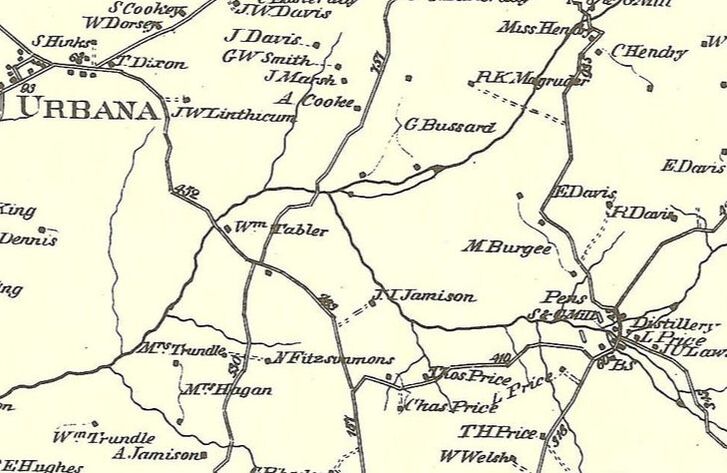






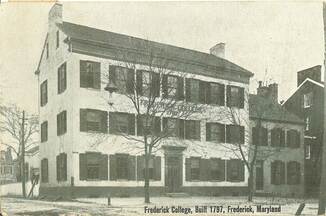




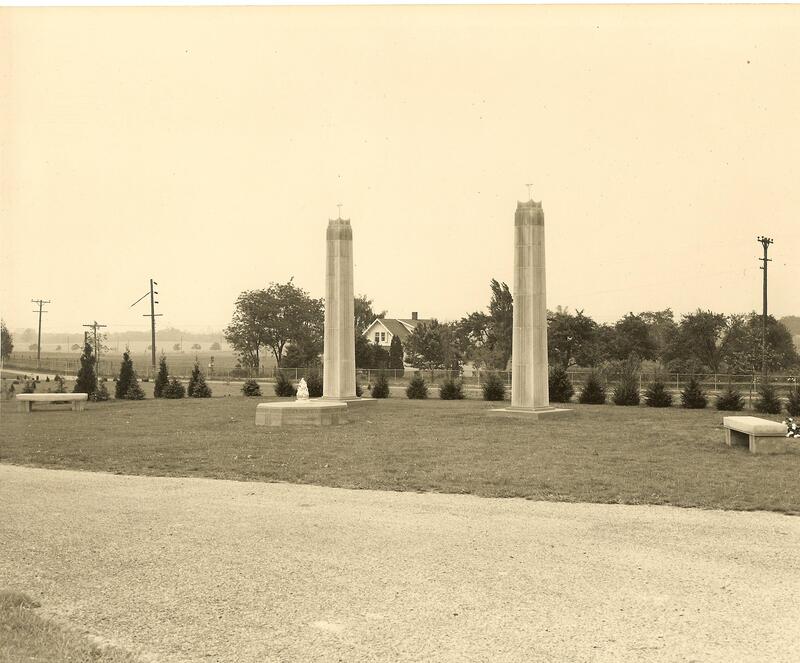


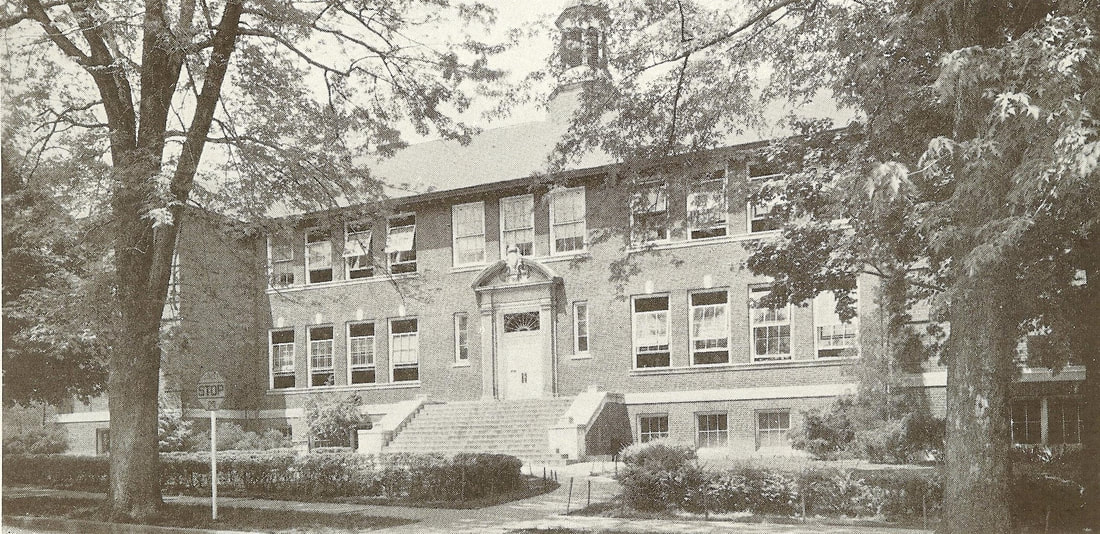

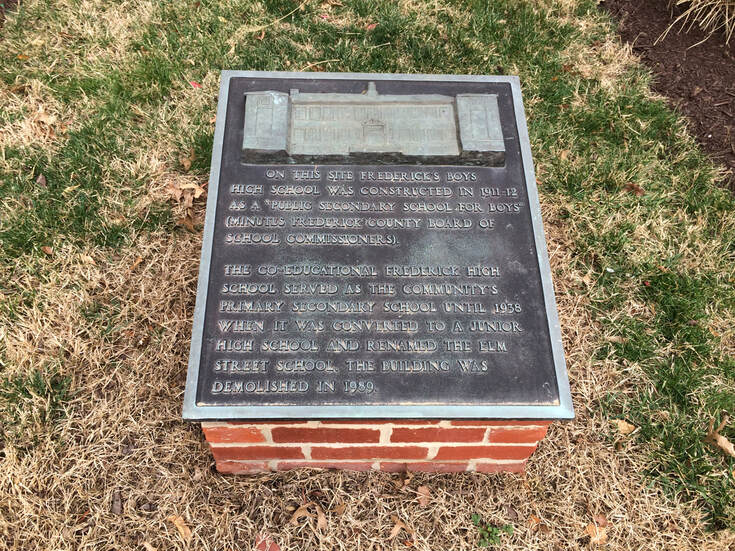
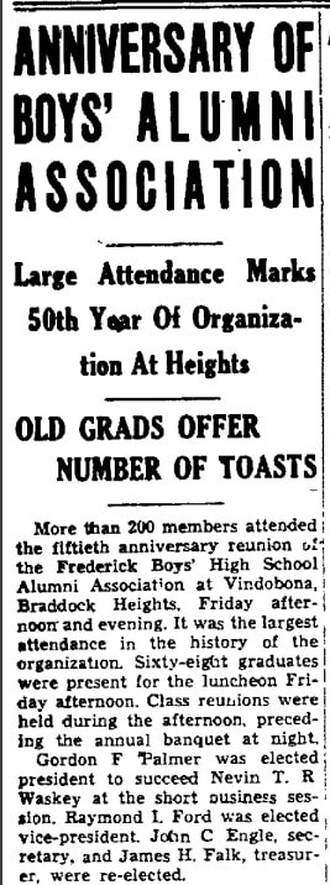











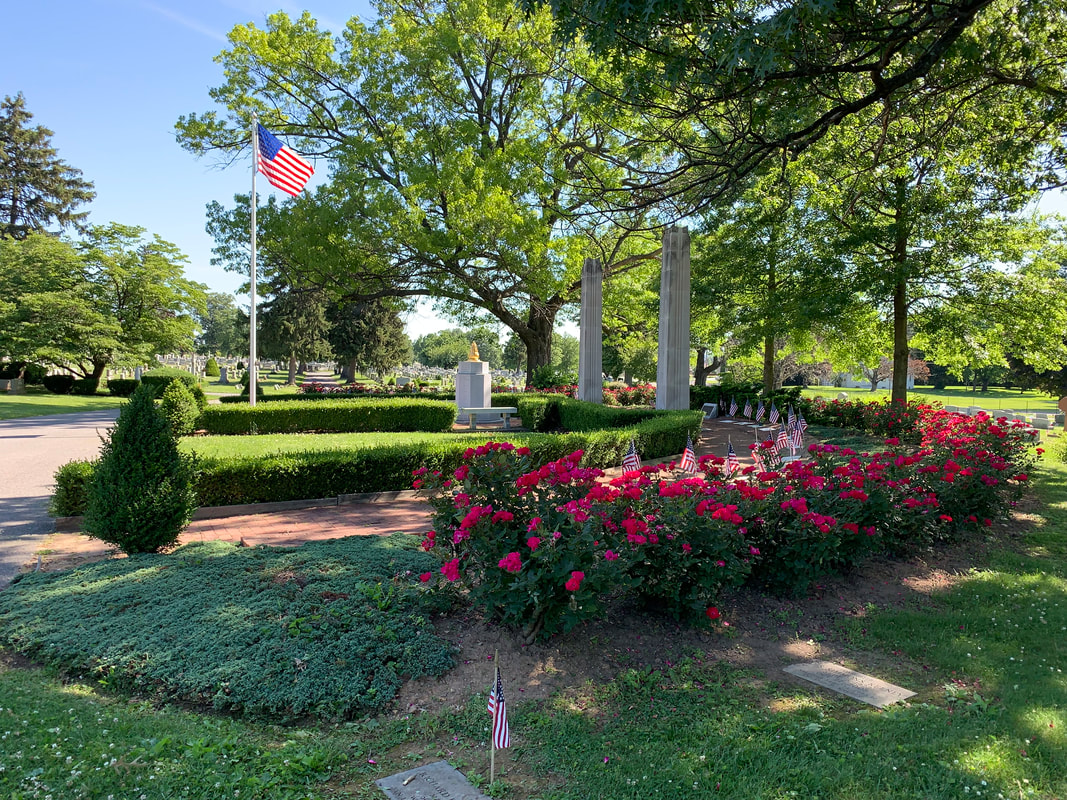
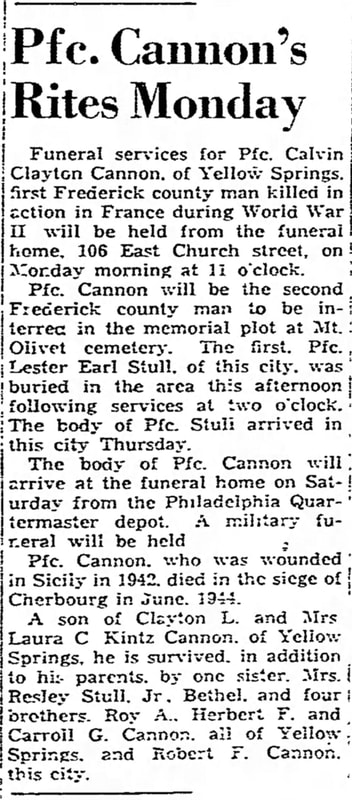


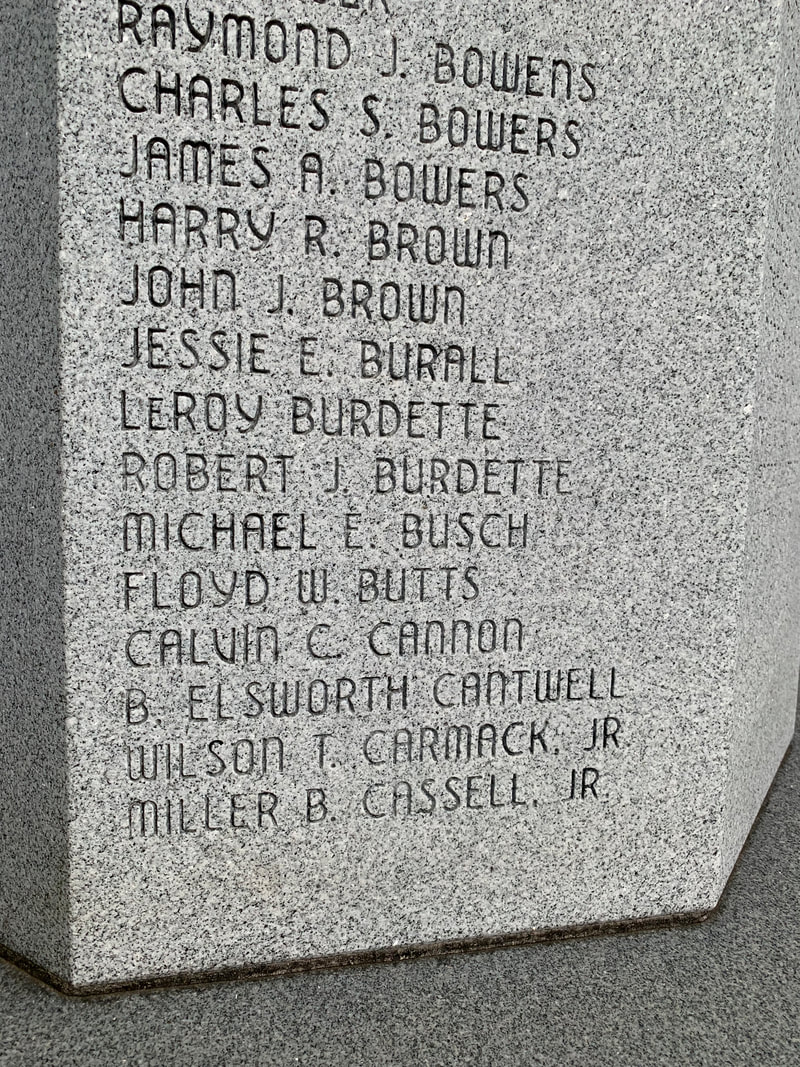



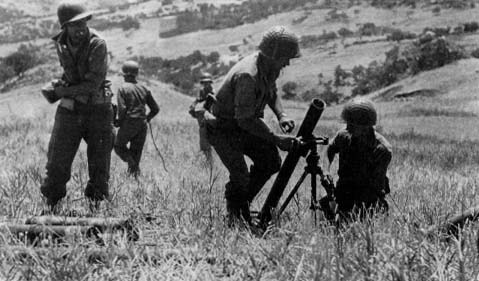

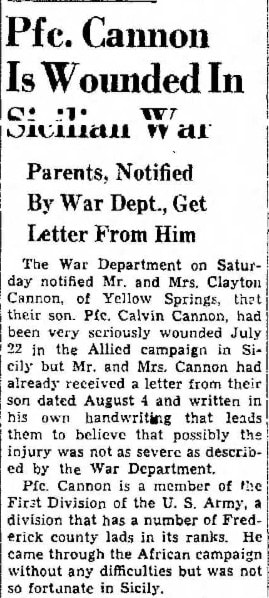




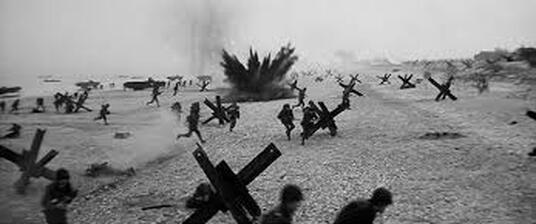














 RSS Feed
RSS Feed